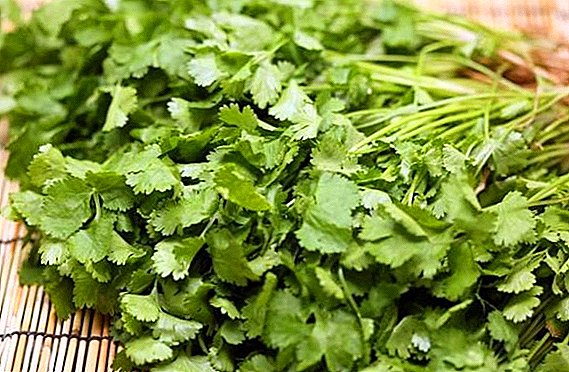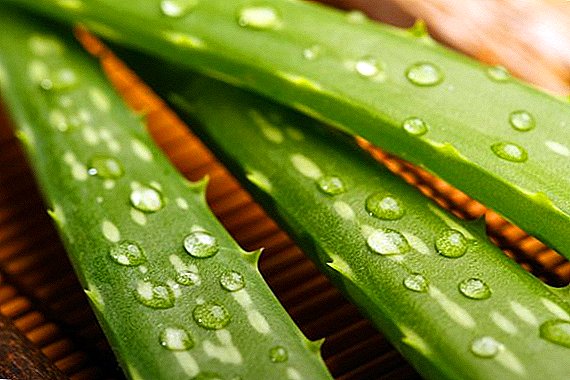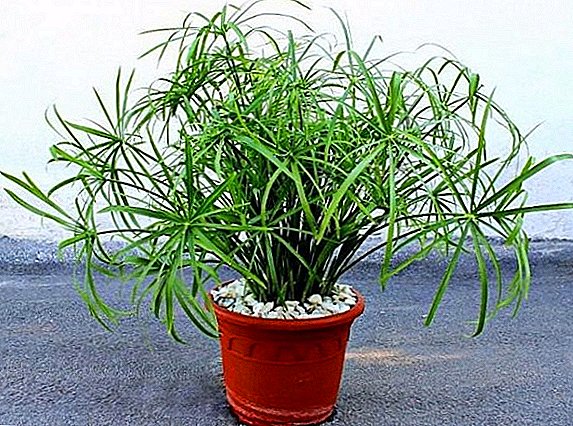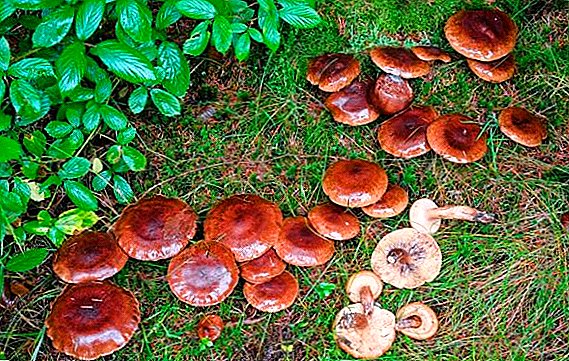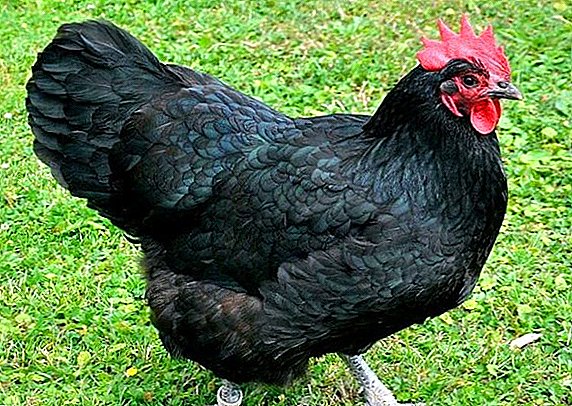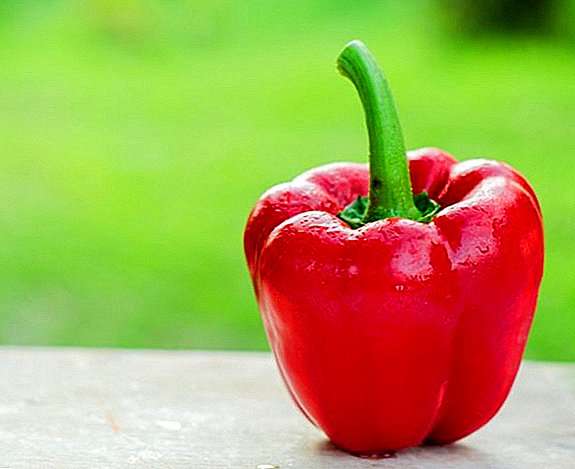 No self-respecting hostess, growing vegetables on the site, is not limited to one variety of culture. Pepper is no exception. As a rule, two, three, and even more varieties of pepper are planted on the beds. Often among them you can see the variety "Gogoshar".
No self-respecting hostess, growing vegetables on the site, is not limited to one variety of culture. Pepper is no exception. As a rule, two, three, and even more varieties of pepper are planted on the beds. Often among them you can see the variety "Gogoshar".
What is it?
Many, having heard the word "gogoshary", will ask themselves the question: what is it. The answer must be sought in Moldova. It was in the Moldavian Scientific Research Institute that a group of varieties was bred, which was called "Gogoshar", or "Gogoshary". In addition, "Gogoshar" is called a group of varieties, and a separate variety in this group.
There are many varieties in this group:
- "Gogoshar Local";
- "Ratunda";
- "Ruby 2";
- "Merishor";
- "Olenka";
- "Greek";
- "Apple Saved";
- hybrid "Olga";
- hybrid "Candy" and others.

Varieties may vary in color, slightly in shape and taste. However, growing and caring for them is the same. The variety is thermophilic, therefore it is possible to grow high-quality fruits only in a warm climate, less often - moderate, with special care. It does not tolerate lowering the temperature below +16 ° C, especially as frosts.
The variety is mid-season. It reaches technical ripeness 110 days after seed germination. Often pepper "Gogoshar" called "Ratunda", or vice versa. After all, it is almost the same. The plant itself is practically no different from its relatives - sweet peppers of other groups of varieties. Squat bush, not very decomposable. For the free development of branches, it needs 45-50 cm. The height is small, up to 35-45 cm. The stem and leaves are dark green. Leaves rounded, pointed. The fruits are bright, traffic light color, i.e. green, yellow, red. In some varieties can be purple, burgundy, even black. In the mass reach 50-130 g.
A distinctive feature of the variety is that many fruits are directed upward in growth, have a very strong stem. The fruits are thick-walled, fleshy, very juicy. Have good keeping quality and well tolerated transportation.
Did you know? Vitamin C in pepper is more, than in a lemon and blackcurrant.
Where to grow?
The cultivars of Gogoshars are completely different in cultivation. Therefore, we will speak not about one variety, but about the whole group of varieties “Gogoshar”.

Location and lighting
Regarding the choice of location, just need to say that pepper pereopilyatsya easily. If you want to get the harvest "Gogoshara" in its pure form, then plant it away from other sweet and bitter peppers. If you plant "Gogoshar" next to the bitter pepper, you get fruits with a burning taste. Our sweet pepper will turn bitter.
The ground for pepper should be well lit, warmed by the sun, but protected from the wind. It is good if earlier cucumbers, cabbage, onions, beets, carrots were planted here. After tomatoes and potatoes, it is advisable not to plant, in order to avoid transmission of diseases.
Quite popular and such varieties of sweet pepper as: "California miracle", "Claudio F1", "Gypsy F1", "Anastasia", "Ox's ear", "Kakadu", "Bogatyr", "Soloist", "Habanero", " Swallow, Golden Miracle, Orange Miracle, Atlas.
Soil for planting
Now we will talk about two points regarding the choice of soil: a substrate for seedlings and the soil on the site. For growing seedlings, it is good to purchase the substrate in a specialty store, but you can also cook it yourself. For this you need to mix peat, sod land and manure in the ratio of 2: 2: 1. You can add compost, sawdust, straw cutting, coarse sand.
On the plot, pepper loves "breathing" soil. It is better if it is loamy, rich in humus. Also, the soil should be well retain moisture, be fertile.

Sowing rules
Pepper is a culture grown by seedlings. Seedlings can be planted in boxes and grow indoors, in a greenhouse or greenhouse.
Soil and Seed Preparation
The soil for planting seeds is prepared in advance, because it needs to warm up well in room conditions. Whatever soil you use, it must be disinfected by heating it in the oven for 10-15 minutes or spilling with a weak-potassium potassium permanganate solution. We mix turf, peat and humus at a ratio of 2: 2: 1, add a little sand and sawdust (you can cut straw), scatter on the boxes, ensuring good drainage.

Seeds for planting also need to prepare. Within 20-30 minutes they must be kept in a 1% solution of manganese. Rinse with clean water. Some gardeners advise to sprout seeds a little before sowing. After soaking in manganese, they should be placed in a damp cloth for 1-3 days for the germination process to start. Ensure that the gauze does not dry out, constantly moisten it.
It is necessary to sow in a wet soil, sprinkle with a little earth. Do not clap. Moisten the soil from above with a spray bottle. Next, to create warm humid conditions, cover the box with glass or film. Put it in a warm, well-lit place where the seedlings will be before planting.
Important! Pepper seedlings do not tolerate changing place, temperature and light.
Sow pepper to the end of February.
Sowing scheme
Sowing seeds "Gogoshar" need a certain pattern. It is necessary to calculate so that in the process of growth the plants do not interfere with each other. The thickening of the seedlings can lead to an increase in height and a decrease in the thickness of the stem, which will adversely affect the survival rate after transplantation. Sow the seeds need rows at a certain distance from each other: between rows - up to 10 cm, between the seeds in a row - about 5 cm.

Seedling care
Caring for seedlings is simple, it includes watering, loosening, diving, ensuring optimum temperature and light. Water the seedlings need moderately, but regularly, as the top layer of soil dries.
To loosen the crust is possible only when the seedlings rise by 1-2 cm. This should be done very carefully, so as not to damage either the root or the plant. When sprouts appear 2-3 true leaves, they need to dive. It should be noted that pepper in this respect is a capricious plant. The pick should be very neat.
On the 12-14th day after the emergence of seedlings, the seedlings need to be fed with a complex liquid fertilizer. Maintaining optimum temperature and light is very important for culture.
Important! Pepper does not make sudden changes in temperature.
With a sharp decrease in temperature of 4-5 ° C, the plant significantly slows growth, sometimes it can even die. Favorable temperature for seedlings will be + 18 ... +22 ° С. Regarding the lighting is to say that the seedlings should be initially placed in a very bright place. If natural lighting is not enough, add artificial.
With a lack of light in an adult plant, the leaves wither, flowers and ovary fall off. 10-14 days before planting seedlings in open ground, it must be hardened. To do this, every day, first for 1-2 hours, every other day - for 2-3 hours, etc., take out the boxes to the street or, if possible, open the windows without changing the place of the pepper. Peppers can be planted only when warming the soil and air to at least + 16 ° C (around the clock).

When planting too much to deepen the seedlings can not, because it does not form the lateral roots. If planted deeply, it hurts the plant, its development will slow down. Planted seedlings need rows with a thickness of about 5-6 shoots per 1 square. m. Between rows leave about 60 cm.
How to care for adults "Gogosharami"
If you want to get high yields, then after planting seedlings provide it with proper care. Watering should be regular. Pepper does not tolerate drying. From this, he sheds flowers and ovary, and, consequently, reduces the yield. Water moderately, just under the root, with warm settled water. Poisoning variety also does not make.
Also for pepper is important high humidity. To do this, you can spill the aisles and tracks. Loosening the soil is necessary. Only here you need to be extremely careful, because the shallow root system can be damaged. This will entail a deterioration in the development of the plant, and maybe its death. In order not to carry out loosening the soil, which is dangerous for the culture, it is possible to resort to mulching with sawdust or straw, it can be mowed grass. Layer mulch - 2-3 cm.

We mentioned the importance of lighting when describing a place for cultivation. Repeat: The plant is very light-loving. In order for each branch to receive enough light, it is necessary to pinch, remove side shoots, pinching the tops, that is, the correct formation of the bush. It is also important to remove weeds. Weed the area should be careful not to damage the stems and especially the roots. You can pull grass only between the rows and paths. Next to the roots - in no case.
Like any other garden plant, Gogoshar needs feeding. It is best to do this three times. After planting seedlings - nitrogen fertilizer, at the time of flowering - complex, with the appearance of fruits - phosphate.
Important! When feeding, strictly follow the instructions for applying fertilizer.
When fruits appear on the plant and begin to pour, a large load is placed on the stems. Even if the fruits are few, they are heavy because of their meatiness. Stems and branches can be damaged, because pepper is a fragile plant. So you need a garter. The first two fruits must be plucked at the stage of technical maturity, that is, green. If they are placed in a dry warm place, they ripen. The rest is red, yellow, depending on the variety.
Harvest need to be very careful, because each fruit has a very strong stem, and if it is torn down, the whole stem can be damaged or the branch broken off. Variety "Gogoshar" is not particularly resistant to diseases and pests. Follow this carefully. First of all, to carry out prevention, and if there is a need, then treatment.

Advantages and disadvantages
Pepper "Gogoshary", like any other, has its advantages and disadvantages.
Did you know? Vitamins contained in pepper, strengthen the walls of blood vessels.
Among the advantages are the following:
- high yield;
- meatiness of the fetus;
- pleasant honey taste with bitterness;
- good keeping quality;
- ability to ripen;
- portability of shipments;
- low calorie;
- the possibility of eating in raw or cooked form;
- suitability to preparations for the winter;
- the presence of many useful properties, etc.

Disadvantages:
- does not tolerate dryness of the soil;
- does not tolerate a lack of light;
- requires constant feeding;
- susceptible to diseases and resistant to pests;
- has a brittle stem;
- superficial root is easily damaged, etc.
Take the trouble to grow Gogoshar pepper on your site - and it will become for you not only the decoration of the area, but also the decoration of the table at any time of the year, a storehouse of vitamins and a preventive remedy for strengthening the vessels.


